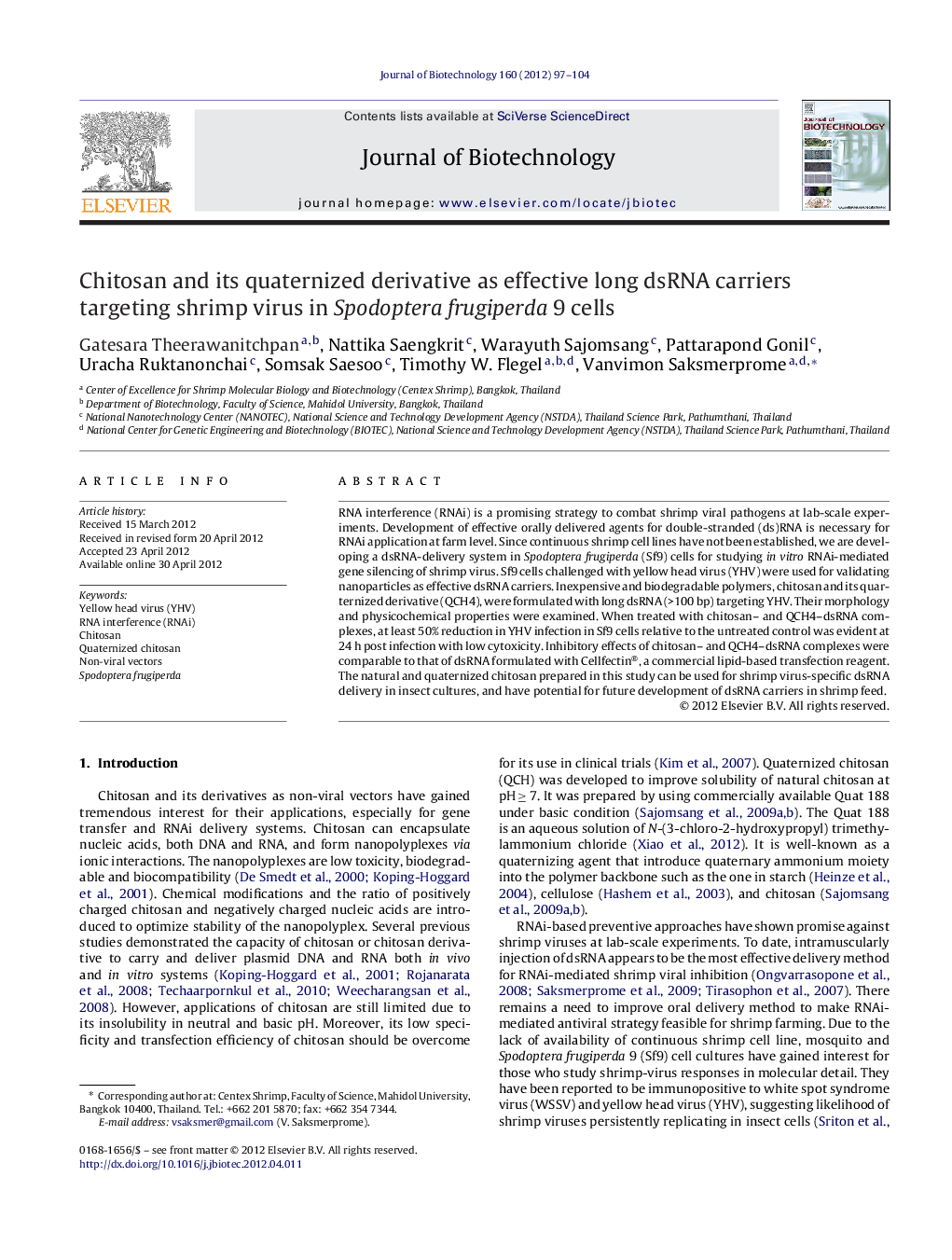| Article ID | Journal | Published Year | Pages | File Type |
|---|---|---|---|---|
| 23849 | Journal of Biotechnology | 2012 | 8 Pages |
RNA interference (RNAi) is a promising strategy to combat shrimp viral pathogens at lab-scale experiments. Development of effective orally delivered agents for double-stranded (ds)RNA is necessary for RNAi application at farm level. Since continuous shrimp cell lines have not been established, we are developing a dsRNA-delivery system in Spodoptera frugiperda (Sf9) cells for studying in vitro RNAi-mediated gene silencing of shrimp virus. Sf9 cells challenged with yellow head virus (YHV) were used for validating nanoparticles as effective dsRNA carriers. Inexpensive and biodegradable polymers, chitosan and its quarternized derivative (QCH4), were formulated with long dsRNA (>100 bp) targeting YHV. Their morphology and physicochemical properties were examined. When treated with chitosan– and QCH4–dsRNA complexes, at least 50% reduction in YHV infection in Sf9 cells relative to the untreated control was evident at 24 h post infection with low cytoxicity. Inhibitory effects of chitosan– and QCH4–dsRNA complexes were comparable to that of dsRNA formulated with Cellfectin®, a commercial lipid-based transfection reagent. The natural and quaternized chitosan prepared in this study can be used for shrimp virus-specific dsRNA delivery in insect cultures, and have potential for future development of dsRNA carriers in shrimp feed.
► Chitosan and its quarternized derivative successfully deliver long dsRNA into insect cells. ► Inhibitory effects against shrimp virus are observed in cells with chitosan–dsRNA complexes. ► Chitosan and its quarternized derivative exhibit low cytotoxicity. ► The chitosan polymers have potential for development of shrimp feed with antiviral activity.
